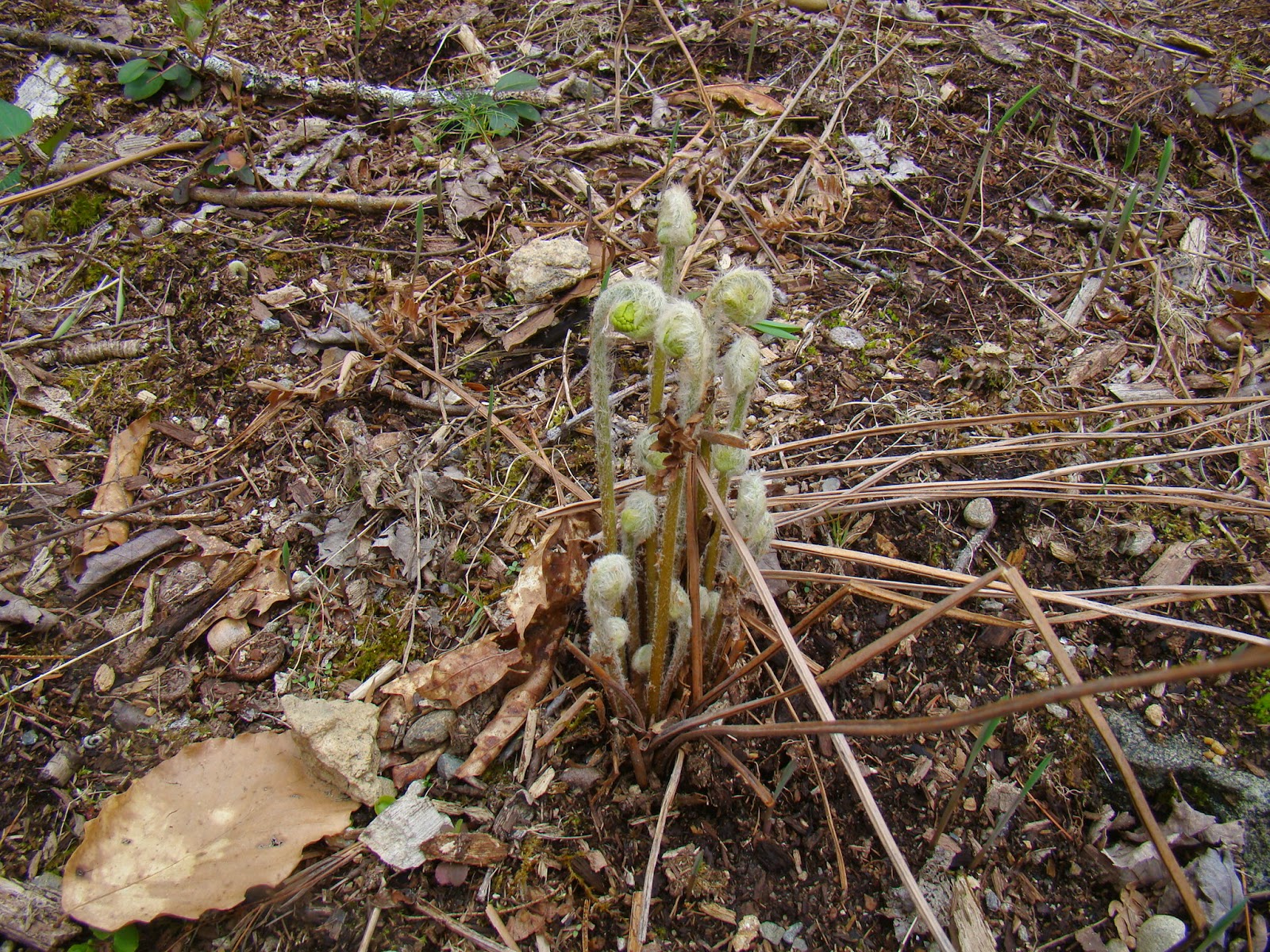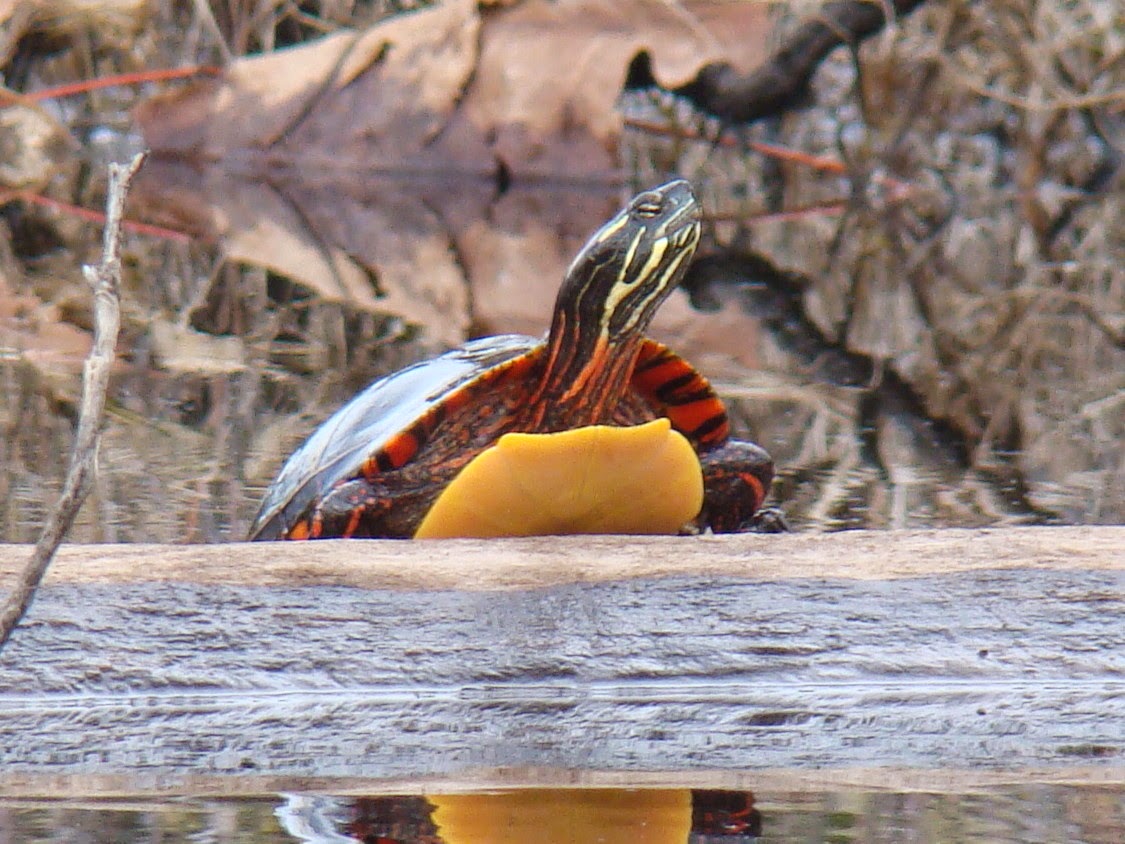 |
| In Memory of Steve Arkell |
There are more and more people around Lake Wicwas as summer approaches, and boats, docks, and floats are starting to appear on the water. It's also a time when people get together to visit again after a long winter, with Memorial Day celebrations and BBQs.
While we are coming out of hibernation, more plants and animals are doing the same, including my favorite wildflower, the Trillium.
 |
| Painted Trillium (Trillium undulatum) |
Also deep in a hemlock forest, I heard the pounding of a Pileated Woodpecker working for its supper. I followed the sound slowly and carefully, being fortunate enough to get a glimpse of it hewing into an old dead snag. I watched for several minutes as it attacked one hole after another, harvesting whatever insects, grubs, and eggs it could find.
Black Cherry is blooming now, attracting pollen-collecting insects of all shapes and sizes to their flowers. If you walk by on a calm afternoon, you can hear the collective buzzing of hundreds of tiny wings from three of four feet away.
 |
| Black Cherry |
This unknown bee has good-sized pollen sacs - called corbicula- on its hind legs.
 |
| Bee with Corbicula from Black Cherry Pollen |
The Red Maple leaves were nearly full size last week; compare that to the oak leaves, which are now just forming.
 |
| New Oak Leaves just Forming |
Here's a size perspective - why are these trees on such different schedules?
The vernal pools will be drying up soon, so the amphibians that breed there will be moving on. I found this Red Eft (newt) on a damp trail one morning.
 |
| Eastern Newt (Notophthalmus viridescens) |
The terrestrial eft is a juvenile, having spent the first phase of its life in water as a larva, but not yet mature enough to be an adult when it will return to water to breed.
The wet weather this spring has been favorable for moisture loving creatures, such as this Leopard Slug, sliming its way along the ground.
 |
| Leopard Slug (Limax maximus) |
 |
| Smooth Green Snake (Opheodrys vernalis) |
Speaking of spiders, no snake is going to get this spider!
 |
| Orb-Weaver Spider |
Hanging from its silk three feet above the ground, this orb-weaver is safe from snakes and other ground predators. However, it was dangling only feet away from the robin's nest; that seems like an easy meal for mother robin!
And the robins - sure enough, three days later, there were four eggs in the nest. The incubation period for robins is 12 to 14 days, so perhaps next week there will be tiny birds peeping madly for their first meal.
The robins are doing their part to paint patriot pictures for Memorial Day!

































